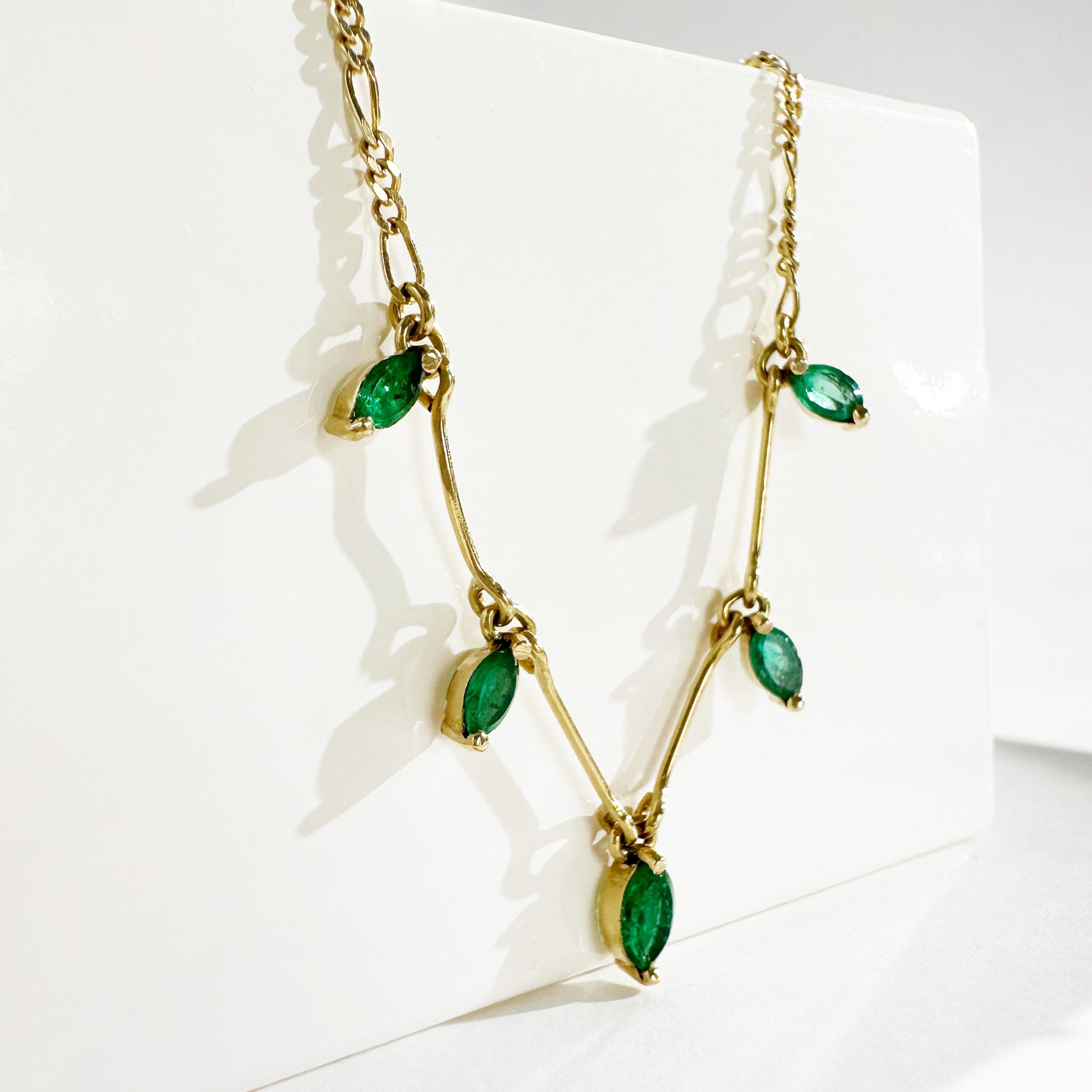
In reality, the social-environmental benefits of antique jewelry are to be considered in contrast with the production of brand-new precious jewelry. Little is said about it and yet, gold mining is one of the most destructive industries in the world.

To give an idea of the impact of this industry: producing gold for a single wedding band generates 20 tons of toxic waste.
By buying an antique jewel, you avoid contributing to this industry and its misdeeds, which we will detail in this article.
OVERCONSUMPTION AND POISONING OF WATER

In addition, the gold mining process is highly toxic. Indeed, gold is found in the form of nuggets or in minute quantities within rocks. To extract gold dust, gold miners must use cyanide or mercury.
At the industrial level, cyanide and caustic soda are used. Small gold miners use mercury. One ton of gold requires 150 tons of cyanide on average.
In addition, mining companies around the world regularly dump toxic waste into rivers, lakes and oceans. Research has shown that 180 million tons of this waste are dumped into nature every year.
Even when these toxins are contained by dams, they often contaminate waterways when infrastructure such as tailings dams, which trap mine waste, breaks down.
Cyanide and mercury poison groundwater and cyanide-treated rubble emits toxic sulfuric acids for years.
IMPACT ON LOCAL POPULATIONS
According to UNEP (United Nations Environment Programme), there have been more than 221 major failures of toxic tailings dams related to mining. These have killed hundreds of people around the world, displaced thousands and contaminated the drinking water of millions.

This combination of adverse effects hinders the economic development of the territory, negatively impacting its main sectors of activity. Ecotourism is suffering the destruction of remarkable landscapes, the forestry sector is losing standing capital, the declared mining sector is seeing its gold resource plundered.
HEALTH HAZARDS FOR WORKERS
The mercury-based gold mining process is used by most small gold miners. The sifted rock mud is mixed with mercury, forming a liquid alloy with the flaked gold. This alloy is then heated, the toxic metal evaporates, leaving only pure gold. In small-scale artisanal mines, workers are rarely equipped with genuine protection against the neurotoxin or devices to recover evaporating mercury, making their labor potentially deadly.
CHILD EXPLOITATION

Child miners can be found in parts of Asia, Africa, Latin America and Europe. The spike in gold prices over the past seven years has lured increasing numbers of child recruits, to bush mines.
The United Nations estimates there are now 100,000 to 250,000 child gold miners in West Africa alone. They work in inhumane and dangerous conditions to extract minerals and ores in high demand in the global market.
WHAT ALTERNATIVES ?
Today, more ethical gold mining channels are developing, and the production of recycled gold represents a more environmentally friendly alternative. Nevertheless, any production of this type consumes energy and water. Thus, by buying antique or vintage jewelry, you indirectly refuse to contribute to the misdeeds of the gold industry. You are not only buying jewelry with a story. You are contributing to ensuring that the history of our planet continues to be written for future generations.
 en
en
 Français
Français


